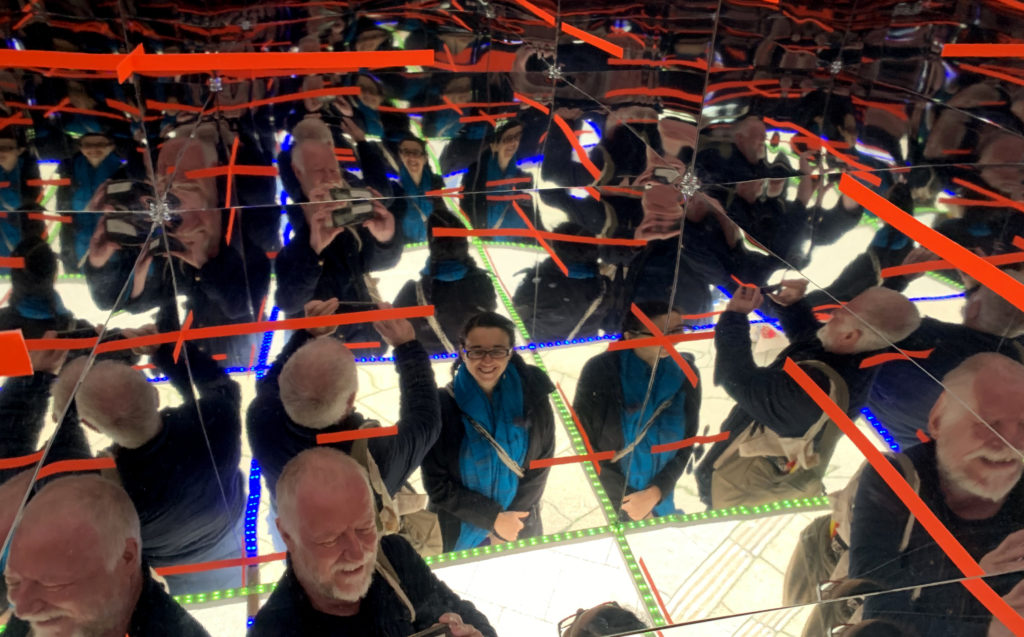
Spectrums of Digital Participation: Digital participation as participation in an artist’s digital practice
When we think of digital participation in arts and culture, we think of projects or works being led/created by demographics of ‘non-artists’. However, there are also those participating in an artist’s practice who are part of the creation of an artist’s work, rather than creating for themselves. These participants can vary from a specific community group to other professionals in the same or other art form(s).
Like many forms of participation, there are spectrums present which follow similar guises of participation and participatory practice. For example, Arnstein’s ‘Ladder of Citizen Participation’ describes a spectrum in the form of a ladder, where at the bottom citizen participation is described as “non-participation”, enabling “powerholders” rather than participants. At the top of the ladder, citizens have control. They have the most power in guiding the outcome of place or project.
Here I will try and explain the spectrum of participation that formed in my mind at the Digital Participation Expedition event at the National Centre for Craft and Design (NCCD) in October 2019 where I began to consider the spectrum of digital participation that was taking place in an artist’s work.
This thinking around this spectrum was supported by Brodie et al’s ‘Pathways through participation’, where “…all forms of participation have some common features. Participation is:
- Voluntary: Participation can be encouraged, supported and made more attractive, but it is inherently about a free choice to take part (or not) without coercion. People get involved because they want to.
- About action: People are moved to action for a range of different motives and their involvement may be limited in time and scope, but all participation requires an action of some kind. Even a relatively passive form of participation such as signing an online petition involves an opinion and a degree of activity and effort.
- Collective or connected: Participation means being part of something. Even when the action is of an individual nature, such as giving a charitable donation or buying fair trade foods, there is a sense of common purpose and the act itself has a collective impact or ambition.
- Purposeful: All participants want to do something that is worthwhile in their own terms, and every participatory act has, and is intended to have, consequences. At the very least, participation makes a difference to the individual participant; at most, it also helps change the world around them”
Artists speaking at the event ranged from Jason Wilshire-Mills, whose work is inspired by participatory engagement with disabled participants. Relating his practice with digital he highlighted that “Disabled people are fantastic at adopting technology” and this is the same as artists adopting it. At the other was Zachery Eastwood-Bloom, who’s work with sculpture has been expanded through various uses of digital tools and practices. Zachary’s examples of participatory practice included professional co-production/habitation with the Scottish National Ballet, as well as other artists. It was an important reminder that participation isn’t just for community and educational engagement, but a valid factor in artists developing their practice. In the middle of this spectrum were TROPE and Studio McGuire, both of which had used elements of participatory engagement, but this was related to particular projects, rather than a main factor of their work. ‘Codex’, by TROPE was a digital installation in St James Church, Dry Donnington in May 2014. Trope worked with local participants to create and perform audio elements of their projection mapped installation. The work also invited audiences to participate in the work. Studio McGuire’s examples of participation included audience participation in site specific theatrical work, as well as more in the guise of mass participation in their Hull City of Culture work ‘Micropolis’. What was interesting about this was that Studio McGuire didn’t reference this as participatory work. However, there were certainly elements of community engagement and co-production present, where participants were filmed dressed in work attire from their own jobs. The work then becoming both representation of the community as well as having an artistic vision.
Each example presented included participation that was voluntary, about action, collective or connected and purposeful in various degrees. Purposeful is however a little obscure, as community participants may have wanted more input on their terms, but it seemed to be clear that their input was explained at the start of the project meaning that this was still voluntary.
Seeing digital participation from an artist’s perspective became eye-opening in relation to what we think of as digital participation practice. Some artists will welcome a high level of community participation in their work, where others will aim for more professional collaboration. No matter what level participants are involved in an artist’s work (digital or not) it is still participation and still a valuable interaction for participants and artist.
A further write up from this event for ArtWorks Alliance can be found at: https://www.artworksalliance.org.uk/our-work/digital-participation/